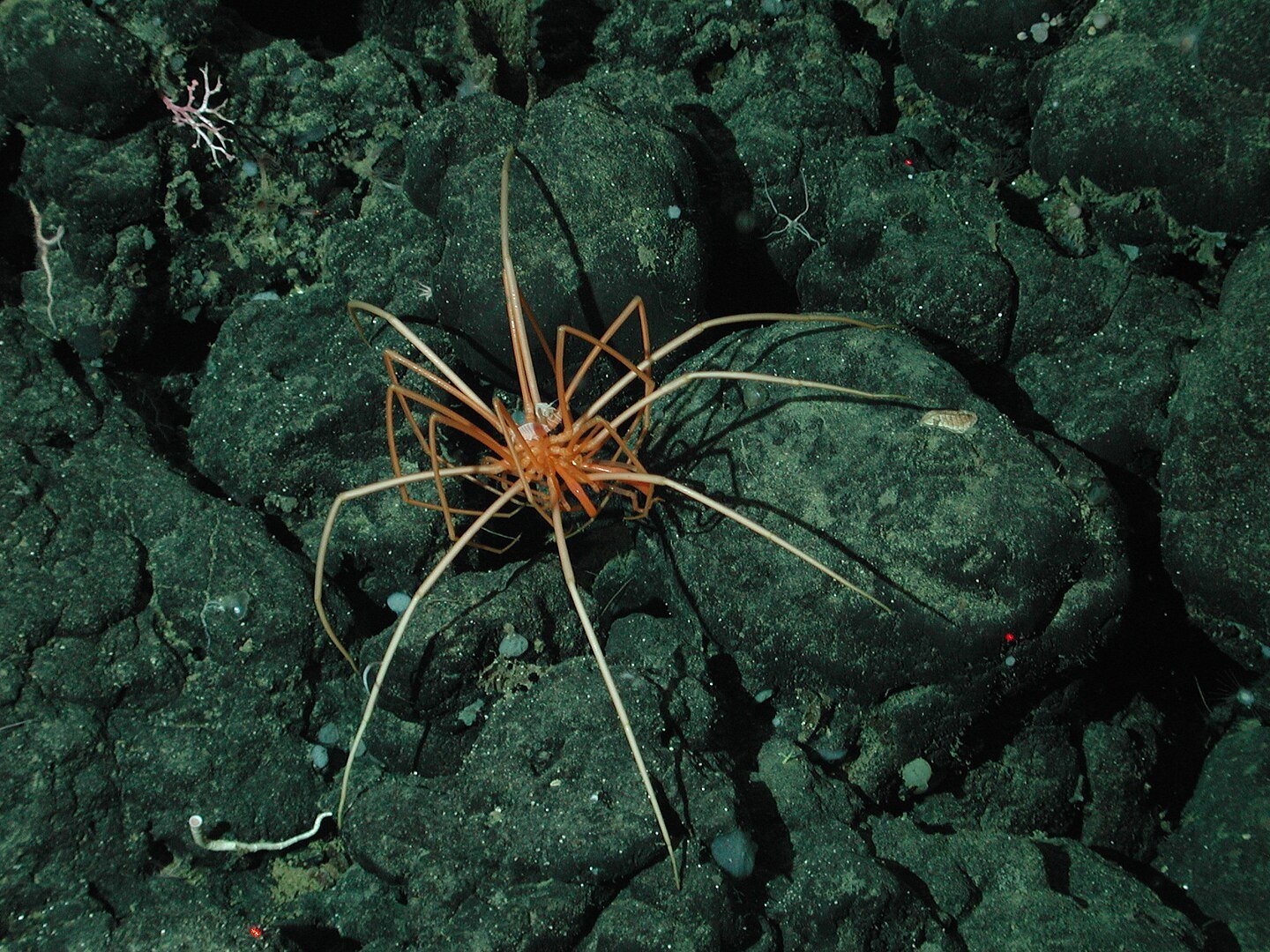

Scientists have discovered three new species of a sea spider off the US West Coast that appear to feed on methane-eating bacteria, according to a study published Monday in the Proceedings of the National Academy of Sciences.
This unusual partnership highlights a surprising survival strategy in one of Earth’s darkest and least explored environments.
The research, led by Shana Goffredi of Occidental College, indicates that these newly identified Sericosura sea spiders may rely on methane-eating bacteria that grow directly on their bodies.
In return for shelter, the microbes convert methane and oxygen into energy-rich substances such as sugars and fats, providing nourishment to the spiders. This is the first time such a feeding method has been documented in sea spiders.
The relationship between sea spiders and methane-eating bacteria was observed in deep-sea regions known as methane seeps, where gas escapes through cracks in the seabed.
The creatures were found at separate sites off Alaska and Southern California, suggesting that each species is highly localized. With bodies measuring just about one centimeter in length, the spiders are nearly translucent and appear to have limited ability to travel far from their habitats.
“Just like you would eat eggs for breakfast, the sea spider grazes the surface of its body, and it munches all those bacteria for nutrition,” Goffredi said.
Scientists say they have discovered three previously unknown species of deep-sea spider that could have a rare diet fueled by a common greenhouse gas.#DeepSea #MarineBiology #NewSpecies #Spiders #MethaneEaters #ClimateScience #OceanDiscovery pic.twitter.com/q0YFwKvv2O
—
Breaking News of the Day (@BNOfTheDay) June 18, 2025
Unlike most sea spiders that use fang-like appendages to capture jellyfish and other soft-bodied prey, the Sericosura species lack such features. Lab observations revealed they instead feed directly on bacteria coating their exoskeletons.
Nicole Dubilier, a marine biologist at the Max Planck Institute for Marine Microbiology who was not involved in the study, stated that microbes in these regions use chemicals rather than sunlight to produce energy.
“This is really the beauty of the symbiosis between the two: The bacteria get that perfect Goldilocks zone with everything they need,” she said. “Even if 80% of the population are eaten (by the spiders), it’s worth it for the 20% to keep surviving and reproducing.”
By analyzing chemical markers in the spiders’ tissues, scientists confirmed the microbes were not just passengers—they were a food source.
The study also documented unusual reproductive behavior. Female spiders release hundreds of eggs from their leg joints, which males then collect into pouch-like bundles and carry. Once hatched, the young appear to pick up bacteria directly from the fathers’ bodies, gaining an early food source.
Researchers say these findings may help explain how bacteria are passed between generations, not only in sea life but potentially in humans, such as the transfer of gut bacteria from mothers to newborns.
The discovery adds to growing evidence that deep-sea ecosystems play a crucial role in preventing methane, a heat-trapping gas, from reaching the atmosphere. Goffredi said microbes like those living on sea spiders might one day be used to reduce water pollution elsewhere.
“People tend to think of the deep sea as a kind of homogeneous ecosystem, but that’s actually untrue,” Goffredi said. “There’s a lot of biodiversity by region and animals are very localized to specific habitats on the seafloor.”
